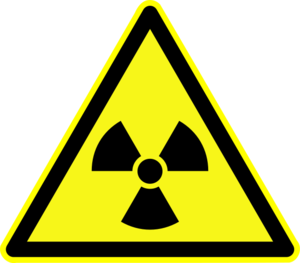Sievert

The Sievert (Sv) is the SI unit for ionizing radiation dose, measuring the amount of energy absorbed in a human's body per unit mass (J/kg).[1] Named after Rolf Sievert for his work with radiation dosage and protection against radiation,[2] the Sievert is a measure of external and internal biological exposure to radiation. Dosage is referred to in different ways, with two pertaining to the Sievert: Equivalent dosage is used when referring to any health effect on the whole body, and effective dosage is more specific to certain bodily tissues and organs.[3]
One Sievert is a large amount of radiation dosage, so typically it is used with a prefix of micro (µSv) or milli (mSv). For example, a common comparison of dosage is the banana equivalent dose which is the amount of absorbed radiation from eating one banana, equal to 0.1 µSv (bananas are naturally slightly radioactive due to their content of the unstable isotope Potassium-40). The radiation from eating bananas is very small, one would have to eat millions of bananas at once to get any appreciable radiation exposure. To get a feel of how much radiation dosage that humans receive from various sources, take a look at this visual by XKCD.
Sievert Unit Converter
For further reading
References
- ↑ Bureau International des Poids et Mesures, "SI units of ionizing radiation" [Online], Available: http://www.bipm.org/en/measurement-units/history-si/radioactivity/#notes
- ↑ Bureau International des Poids et Mesures "R. M. Sievert (1898-1966)" [Online], Available: http://www.bipm.org/en/measurement-units/history-si/radioactivity/sievert.html
- ↑ Radiology Info, "What is radiation dose?" [Online], Available: http://www.radiologyinfo.org/en/safety/index.cfm?pg=sfty_hiw_09

